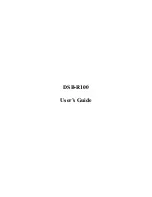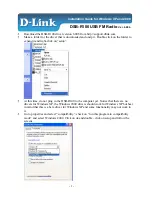
the BLT and one side of the BLT output winding is grounded.
●
Note: The handle of the switch on the rear panel should be facing towards the coax jack when using either
a balanced line on the binding posts or a coax feed antenna which is not using the tuner.
Using the BLT:
Learning to use the tuner takes some practice. The best way to practice and to learn how to operate the tuner is
by transmitting into a dummy load. Once you do find a match, if you mark the knob settings on the case you will
find these settings will repeat very closely for a wide range of loads and will provide a good starting point.
Set the knobs on the capacitor shafts to point towards the center of the case as they are rotated. This gives you
the space to add the dial markings. Use different color markers for each band. If you don't want to do this
directly on the case, use a piece of heavy paper like from an index card and then laminate it.
Before transmitting, adjust the
TUNE
and
LOAD
capacitors for best band noise or signal strength. Now switch from
Operate to Tune mode with S7. Now transmit a string of dits or dahs and fine tune the
TUNE
and
LOAD
capacitors so
that the SWR LED gets very dim. This of course, is easier said than done. The tuning is very sharp and if you
tune too fast you will never see the LED get dim. A further complication is the Load and Tune controls are
interactive.
First
slowly
adjust the
LOAD
until you see even the slightest dimming of the LED. Now adjust the
TUNE
and see if
you can make it even dimmer. Go back to
LOAD
and see if this will dim the LED farther. If no farther improvement
can be made, advance the
TUNE
slightly (try clockwise first) which will make the LED brighter again, then
readjust the
LOAD
. Working back and forth a few time between the Tune and Load controls should enable you to make
the LED become very dim or go out completely. In most cases when using a ladder line feed antenna, you will use
the HI-Z setting of the BLT. In some cases, you may only be able to find a match using the Low-Z setting.
Using the BLT with end feed wire antennas or coax.
Switching the handle of the rear panel switch so it faces the binding posts will ground the Black balanced line
binding post and connect the Red post to the coax jack. End feed wire antennas can now be connected to the Red
binding post and a counter pose to the Black post. Use the High Z position of S6. if the wire is near a 1/2 wave
in length. Use the Low Z position if the wire is near a ¼ wave or less in length. The Low Z position is also used
when using the BLT to match a coax feed antenna.
Fuses:
A solid state, self-resting fuse is built into the circuit. This fuse will trip if the current exceeds 1.5A. This is enough to prevent
a fire or damage to your power supply if a serious short develops inside the rig. However, it is still a good idea to have a 1 A,
fast blow fuse in the power supply cord.
Paddle wiring:
The paddle jack uses “standard” wiring.
Tip is Dot.
Ring is Dash.
Sleeve is ground.
Straight key:
Use a mono plug or ground the ring of a stereo plug.
There is no paddle-sense reverse built into the firmware.





































